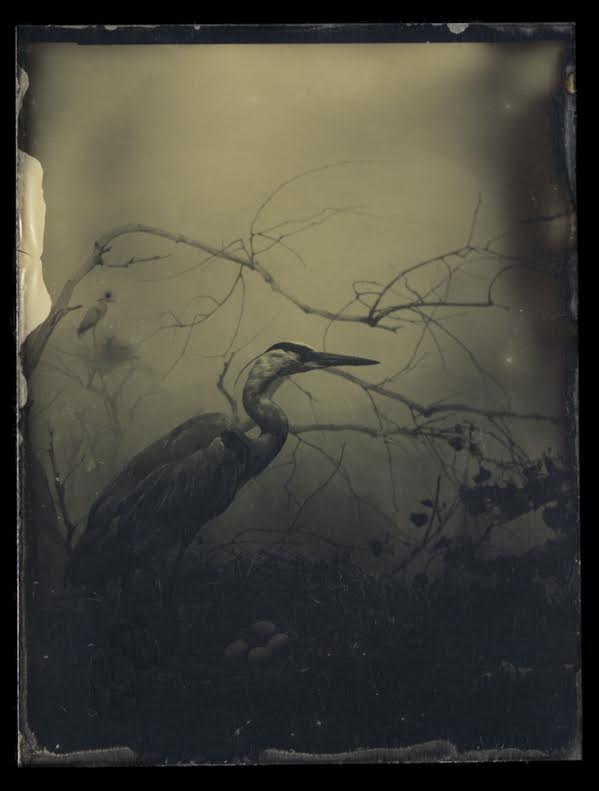I am really happy to share some work by Alaina Hickman today. I first heard of Alaina at the MWSPE conference in Lincoln in October, where I saw her speak briefly about her photographs of specimens in Lincoln’s Morrill Hall. In her talk, she mentioned so many things that resonated with me: both taxidermy’s and photography’s goal to make the impermanent permanent, taxidermy animals’ role in the future of an increasingly screen-based museum world, that museum dioramas are sensationalized and idealized depictions of scenes that never existed, etc.
I was lucky to meet Alaina and chat with her for a bit, as well as see her beautiful tintypes in an exhibition at University of Nebraska-Lincoln in conjunction with the conference. The tintypes, already with a reflective surface, were displayed in frames and behind glass, as the specimens themselves are experienced that way. I loved the effect.
From the artist’s statement: I have always loved animals. These dioramas are beautiful recreations of nature scenes, places I could never go and animals I would probably never see, but it’s impossible to ignore the reality of the fact that in order to construct them, these animals were killed, stuffed, and then arranged into lifelike poses. The great irony is that the reality these dioramas represent was destroyed in order to create them. The nature that once lived is now encapsulated and objectified. In this way photographs and dioramas are similar, each try to show a frozen moment in time. The tintypes themselves with their reflective surfaces mimic the glass on the dioramas. But, as reality is dynamic and in continuous motion neither medium is truly capable of recreating the experience. So as there was once nature and living creatures there are these dioramas, likewise through my photography there was once a diorama and now there are tintypes, each a new layer of façade removed from reality.
From “Specimens of Morrill Hall”
From “Personification”
Visit artist's site: spenational.org/members/alaina-hickman
Posted December 2nd, 2013














